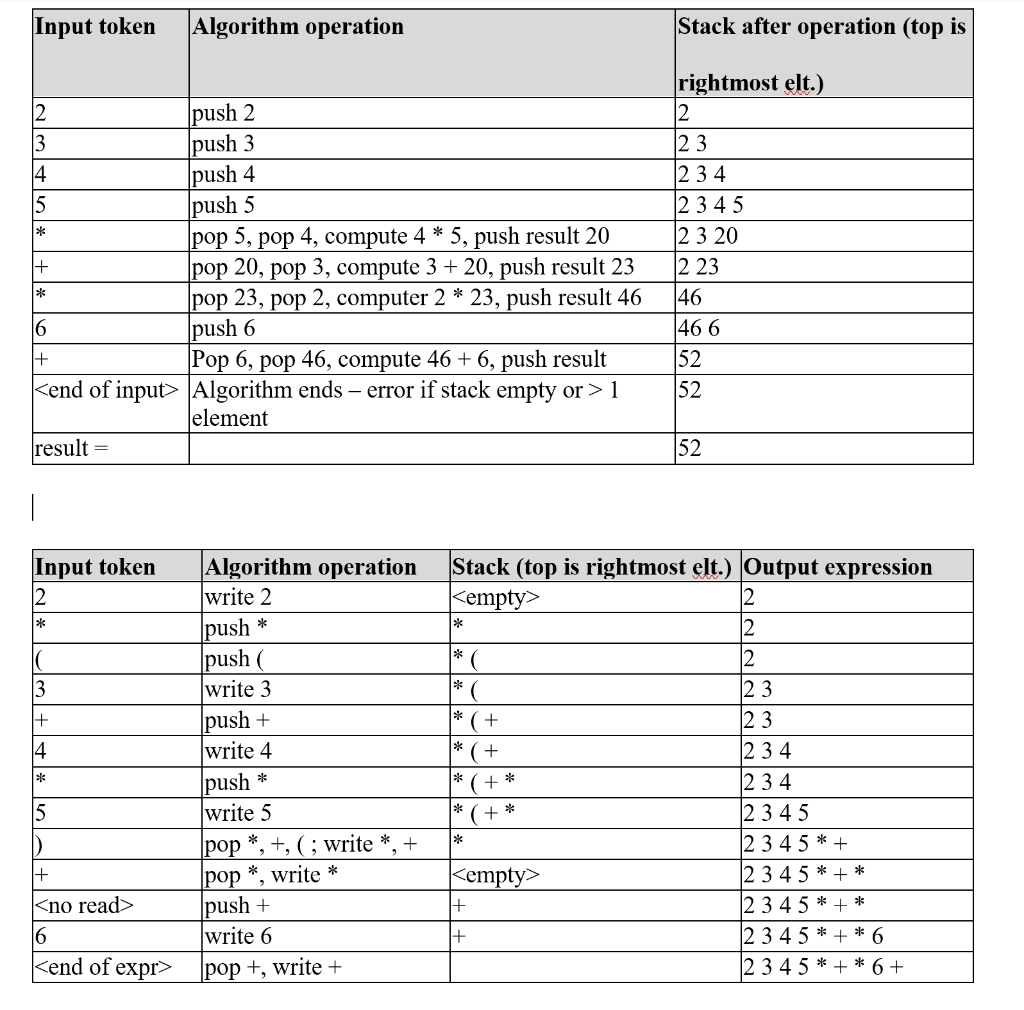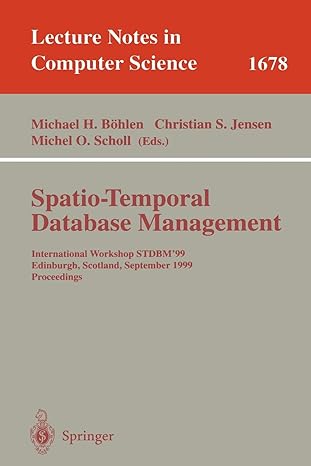Question
Python Postfix expression used as input and the arithmetic result of the postfix expression processing or error message in case the postfix expression is not
Python
Postfix expression used as input and the arithmetic result of the postfix expression processing or error message in case the postfix expression is not correctly rendered. The infix expression used as input. The postfix expression equivalent to the infix expression from #2 or the equivalent postfix expression manually converted and directly entered into your program
infix 3 + 4 16 * 5 7 * 6 + 15 5 + 4 * 2 - 5 (5 + 4) * 2 - 5 24 / 4 + 6 * 2 7 * (6 + 15 11 * 2) + 20 postfix 3 4 + 16 5 * 7 6 * 15 + 5 4 2 * + 5 - 5 4 + 2 * 5 - 24 4 / 6 2 * + 7 6 15 + 11 2 * - * 20 + Postfix expression Input expression in postfix, uses one stack, outputs the arithmetic result
Tokens = numbers (operands or elements), arithmetic operators ({+, -, *, /}), and parentheses Basic algorithm (guaranteed to be mostly correct):
while there are more tokens in the expression read next token
if token is an operand, push token else if token = operator
pop previous two stack elements a then b - error if only one element on stack calculate arithmetic operation using the two elements and operator: b operator a push the result
endwhile
result is the top of stack (and the only element in the stack) error if stack size 1 Example: [2 3 4 5 * + * 6 +] ( = infix expression [2 * (3 + 4 * 5) + 6] )
Infix to postfix expression conversion for use in completing Part 2
Input expression in infix, uses one stack, outputs equivalent postfix expression
Tokens = numbers (operands or elements), arithmetic operators ({+, -, *, /}), and parentheses
Uses one stack, initially empty, with push, pop, top, and empty operations (pop behaves like top-and-
while there are more tokens in the expression read next token
if token is an operand, write it to output else if token =
( : push token
): pop each stack element and write each to output until ( is top, then pop is_an_operator:
if stack is empty or top = ( push token
if operator has higher priority than top, push operator if operator has equal priority to top:
+ or *: push token
/ or -: write top to output, pop, push operator if operator has lower priority than top:
pop and write to output push operator
end else if endwhile
pop and write all remaining stack elements to Output
Example: [2 * (3 + 4 * 5) + 6] [2 3 4 5 * + * 6 +]

Step by Step Solution
There are 3 Steps involved in it
Step: 1

Get Instant Access to Expert-Tailored Solutions
See step-by-step solutions with expert insights and AI powered tools for academic success
Step: 2

Step: 3

Ace Your Homework with AI
Get the answers you need in no time with our AI-driven, step-by-step assistance
Get Started


